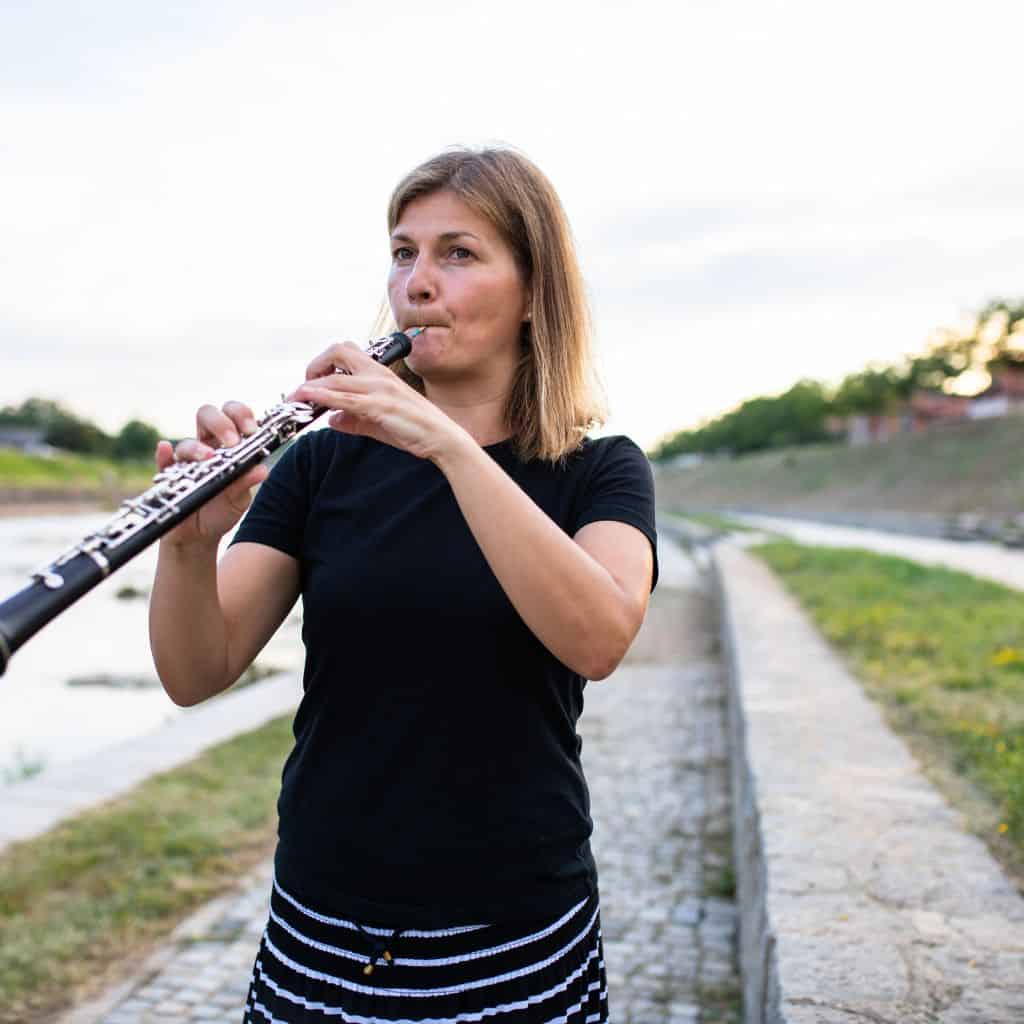Do you wish to know if you can flutter your tongue on an oboe? From several online research, I discovered that flutter tonguing is a seldom used technique on the oboe, a double-reeded woodwind instrument.
Oboists often use their tongues to articulate notes. However, flutter tongue is a technique more commonly associated with other wind instruments, such as the flute and some brass instruments. Different approaches for creating distinctive effects on the oboe include multiphonics, harmonics, and alternate fingerings.
Let us go further:
Which Instruments Can Flutter The Tongue?
Wind and brass instrumentalists utilize flutter tonguing to produce a fluttering sound when playing their instruments. Rolling the tongue while blowing air through the device is required. This approach may be used on the flute, clarinet, saxophone, trumpet, trombone, French horn, and tuba. It gives the music a distinct vibrato-like quality.
How Do You Tongue On An Oboe?
To tongue on an oboe, you use your tongue to control the start and stop of the sound. Place your language lightly on the reed to start a note and briefly return it to stop or separate notes.
Practice is essential to develop control and precision but avoid using excessive force for a better sound quality.
Can You Flutter Your Tongue On The Clarinet?
Flutter tonguing, or rolling the “R” sound while blowing air through an instrument, is not commonly utilized on the clarinet. The clarinet features a single-reed mouthpiece, which is more often associated with brass instruments and some woodwind instruments, such as the flute and saxophone, which have a distinct embouchure and airflow mechanism.
While flutter tonguing is not a traditional clarinet technique, clarinetists can use other techniques to generate distinctive effects and sounds, such as trills, vibrato, glissando, and alternative fingerings. These strategies can be used to bring expressiveness and character to clarinet music.
How Do You Tongue Fast On The Oboe?
To tongue quickly on the oboe, start with slow and accurate practice, use the “T-D-T” tonguing syllable, focus on the tip of your tongue, keep your embouchure steady, incorporate articulation exercises, use a metronome to increase speed gradually, ensure even tonguing, experiment with different dynamics, record you’re playing for self-assessment, and consider seeking guidance from an oboe teacher. Fast tonguing requires practice and patience.
Why Does My Mouth Hurt After Playing Oboe?
Mouth pain after playing the oboe can occur due to factors like pressure on facial muscles, reed issues, playing technique, and lack of muscle conditioning. To alleviate the pain, check your reed’s condition, improve your process, gradually increase playing time, and consult a music instructor. If the pain persists, seek medical advice.
How Do You Vibrate On An Oboe?
Flutter tonguing, or rolling the “R” sound while blowing air through an instrument, is not commonly utilized on the clarinet. The clarinet features a single-reed mouthpiece, which is more often associated with brass instruments and some woodwind instruments, such as the flute and saxophone, which have a distinct embouchure and airflow mechanism.
While flutter tonguing is not a traditional clarinet technique, clarinetists can use other techniques to generate distinctive effects and sounds, such as trills, vibrato, glissando, and alternative fingerings. These strategies can be used to bring expressiveness and character to clarinet music.
Where Should Your Lip Be For The Oboe?
A pleasant sound is dependent on precise lip positioning and embouchure when playing the oboe. Create a tight seal around the reed with your top lip just above the top wire and your bottom lip just below the bottom wire.
Keep your jaw relaxed and avoid biting the reed. To form the sound, use regulated breath support and experiment with tongue position. Seeking advice from an oboe teacher can help with specific criticism and progress.
Why Is It Hard To Make A Sound On The Oboe?
The oboe’s delicate double reed, the necessity for accurate embouchure control, and the demand for constant air pressure make producing a sound difficult.
It might not be easy to maintain reed integrity, embouchure stability, and pitch control. Learning to play the oboe requires patience, practice, and coaching, especially for beginners.
What Is Forked F On Oboe?
On the oboe, a “forked F” refers to a finger position used to play the note F or F#. It involves using a combination of specific keys and fingerings, typically using the left-hand index and ring fingers, along with the right-hand middle finger.
This fingering is chosen for its ability to produce a softer, mellow tone, and it is used in specific musical contexts to achieve desired tonal qualities.
Does The Oboe Have A Nasal Sound?
The oboe is known for its unique and distinctive sound, which is often described as having a nasal or reedy quality. This distinctive sound is due to the oboe’s double reed and conical bore design, which creates a rich and penetrating tone.
The reed vibrates between the player’s lips, and the conical shape of the oboe’s body amplifies and shapes the sound.
While the phrase “nasal” is occasionally used to characterize the oboe’s sound, it’s crucial to highlight that this is not always a bad thing. It is, instead, what gives the oboe its distinct and expressive tone.
Oboists manipulate and mold this sound to fit the musical context, and they may generate a broad spectrum of tonal colors, from bright and piercing to warm and gentle, depending on their skill and the kind of music they perform.
So, while the oboe has a unique and slightly nasal tone, it is precisely this trait that has made it a popular and flexible instrument in both classical and modern music.
Conclusion
Now that we have learned that flutter tonguing is a technique that is rarely used on the oboe. Oboists rely on instrument-specific approaches and articulations to attain the appropriate tonal characteristics and expressiveness in their performance. Oboists who master these skills may explore a wide range of musical possibilities while producing the oboe’s unique and rich tone.

